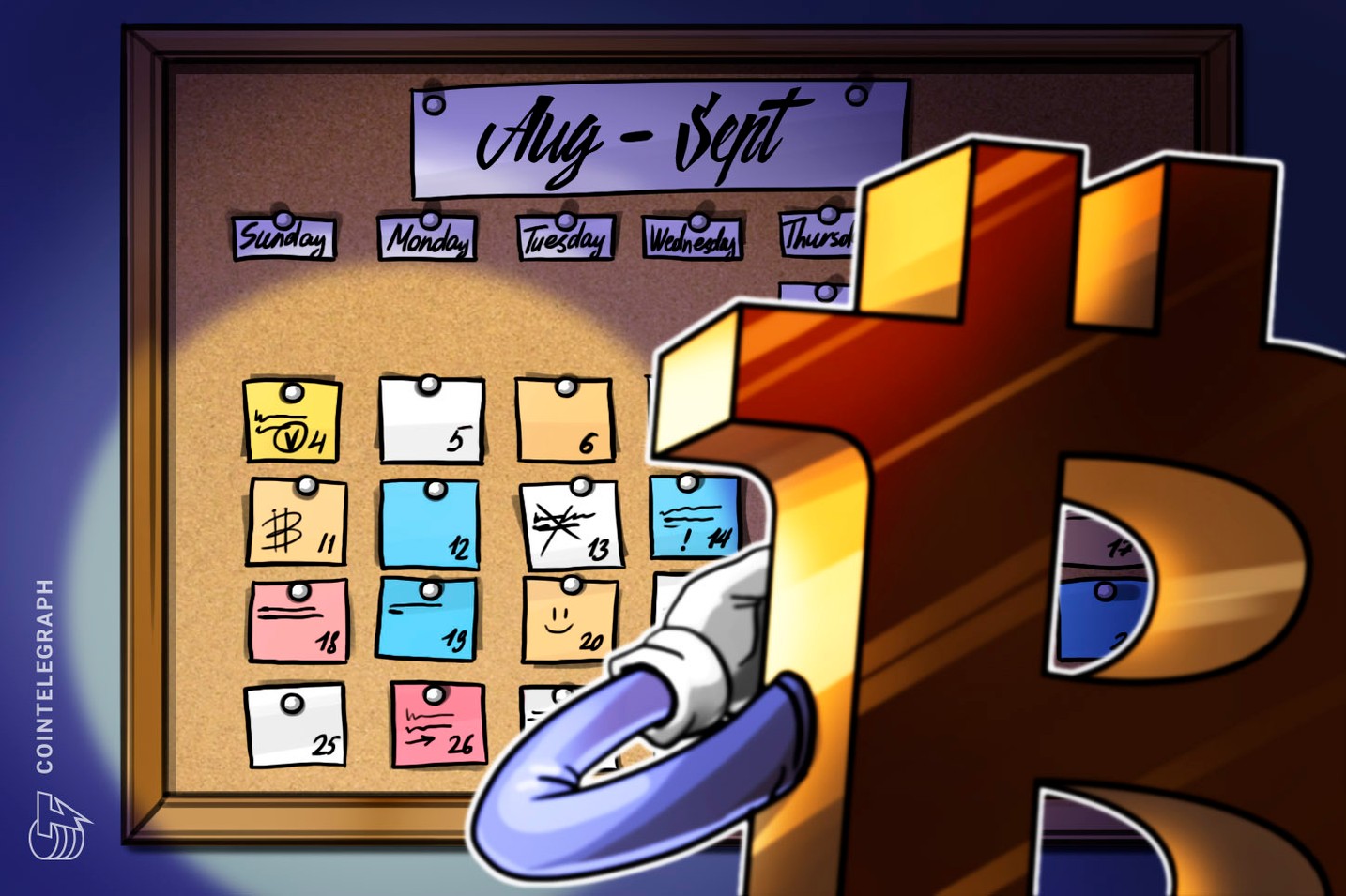Bitcoin 'ghost month' started with a 20% BTC price flash crash — What's next?

Bitcoin's (BTC) price has recovered 13% since dropping to $49,050, but the commencement of 2024’s so-called "ghost month" is expected to keep investors cautious, especially in the Asian market.

What is a ghost month?
This year, the ghost month is from Aug. 4 to Sep. 2. According to the Chinese lunar calendar, a ghost month is technically the seventh month of the year, or around August and into early September. This period is associated with bad luck in Asian culture, and historically, BTC has demonstrated negative returns during this particular time.
Related: How low can the Bitcoin price go?
It is important to note that this cultural phenomenon does not objectively affect stock or crypto markets. Yet, the beginning of a ghost month usually plays a role in market psychology and investors' profit expectations.
Bitcoin correlates with ghost months, as BTC prices have witnessed massive drawdowns in each phase since 2017.
As tabulated in the chart below, Bitcoin has witnessed varying levels of correction in each ghost month.

While the overall return on investment (ROI) over each ghost month hasn’t been extremely bearish, each period witnessed a flash crash.
Only 2021 was a true exception in recent years, as the market rallied. However, BTC lost 23% thereafter and entered a multi-month bear market.

Previously, BTC open interest (OI) dropped from a high of $21 billion on July 29 to under $15 billion on Aug. 6. This was a sign of caution exhibited by traders potentially trying to avoid liquidation.

Then as the ghost month kicked off, Aug. 5 witnessed a record number of coins being sold at a loss.
Specifically, for BTC with age ranges up to one day, and one day to one week alone, more than $5.2 billion in BTC was moved in a single hour.
Bitcoin MVRV-Z score highlights key pattern
Bitcoin's latest drop below $50,000 was caused by with multiple headwinds, such as fears of recession and a potential Fed pivot. However, BTC's MVRV-Z score indicates that the euphoric stage of this particular bull market is yet to happen.
MVRV-Z is the ratio calculated by dividing the market value by its realized value. It essentially gives another perspective on BTC demand and supply dynamics. When the ratio is above 3.7, it marks an overvaluation of the asset, while an index below 1 indicates undervaluation.
In the past, Bitcoin has crossed the 3.7 mark by a huge margin during each bull market phase. This was evident in 2013, 2017, and 2021, but it hasn’t done that yet in 2024. Presently, the ratio is at 1.40, which means it is still undervalued at its current price point.

The price has rebounded above $57,000 at the time of publication, with BTC up 4% over the past 24 hours. The relative strength index, or RSI, is also in the oversold region on the daily chart, suggesting that the bulls have the advantage in the near term.
However, BTC price action has a habit of volatility during its ghost month in particular. Thus, Bitcoin could "fill" and remaining gaps or downside wicks over the next days or weeks.
Related News
- Unizen hacker transfers $2.1M stolen funds to Tornado Cash
- Web3 ecosystem thrives as AI DApps capture 28% market share
- Bitcoin needs 'low $40,000s' for best bull market entry — 10x Research
- Hong Kong virtual bank Mox Bank launches crypto ETF trading
- BlackRock's spot Ether ETF amasses nearly $900M since launch
- Homeland Security leads to man charged over crypto recovery scam
- Bitcoin volatility hits 20-month high, traders hedge against further slump
- 'Something is happening' — Bitcoin hodlers scooped $23B in the past 30 days
- Binance saw $1.2B of inflows in one of biggest trading days of 2024, says CEO
- SOL/ETH ratio hits new all-time high amid market turmoil
© 2025 DeFi.io